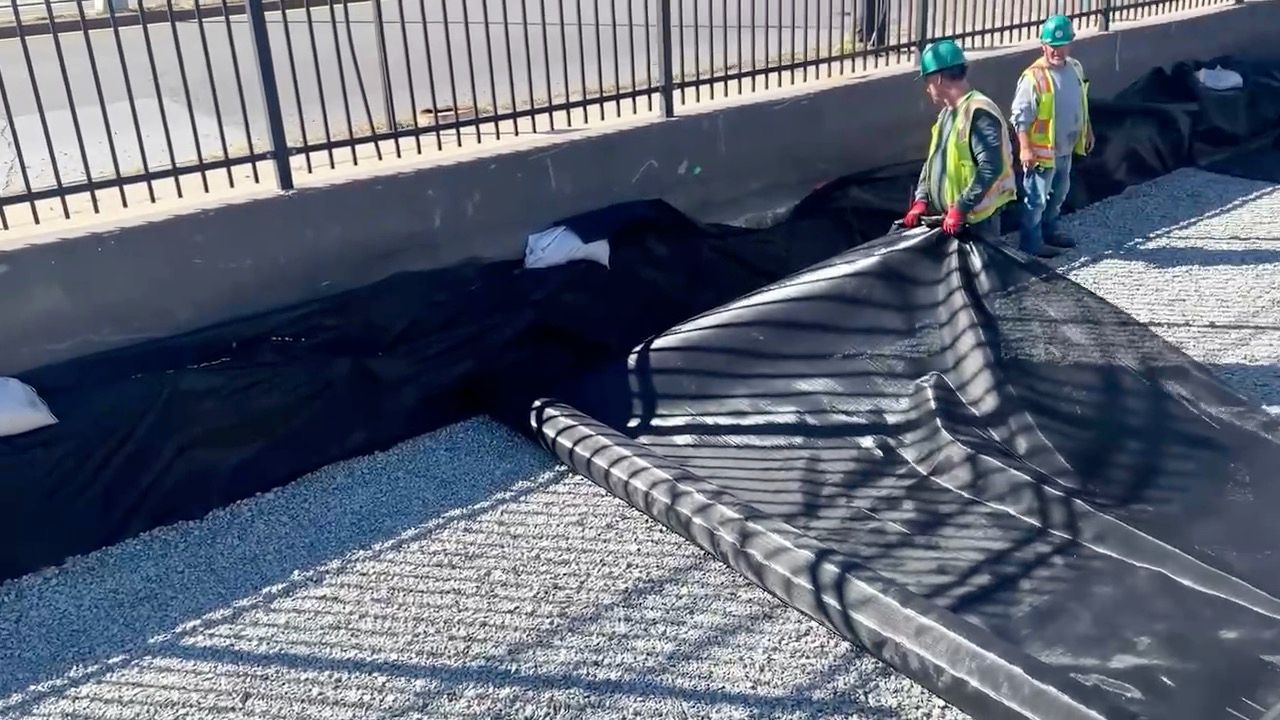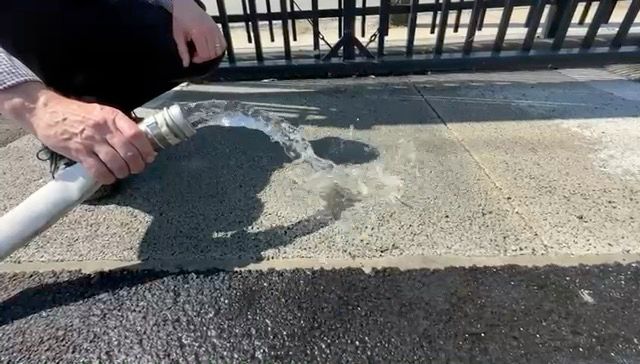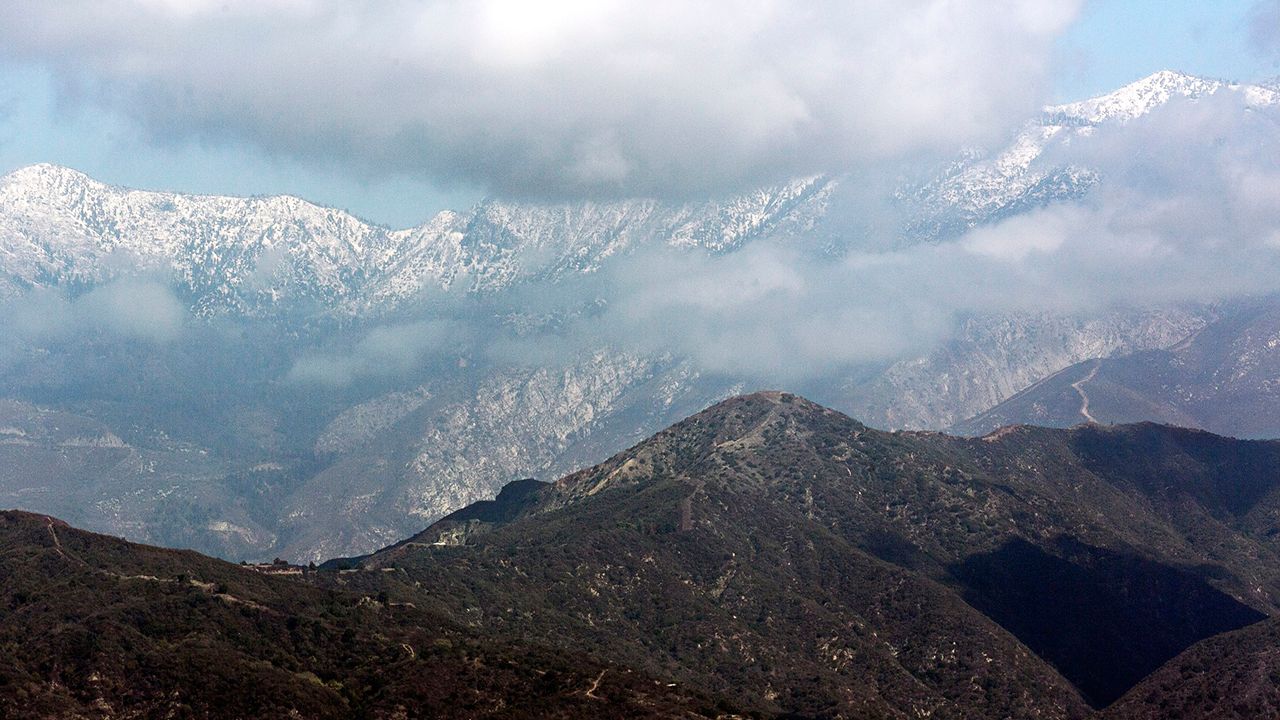I got a tip on a story that would be perfect for Earth Day. The New York City Department of Enviromental Protection reached out to me to tell me about a type of pavement where the water just drained right through it. I was intrigued and knew I had to see this for myself.
Flooding is a major issue for our city. Over 60% of it is paved. When rain falls onto pavement, it runs off instead of getting absorbed like it would on grass. The runoff causes flooding and can overwhelm the sewer system, backing up water into homes and polluting our local waters. This new permeable pavement seemed like a solution to the city's flooding issues.
On Monday, April 15, I made my way to T Mina Supply Company in Flushing, Queens. I was going to meet with the owner, Tom Mina, and Angela Licata the deputy commissioner for sustainability with the New York City Department of Environmental Protection. We were going to talk about permeable pavement, and they were going to show me this flood busting technology in action. I was excited. They were going to take a fire hose and pour water on the permeable pavement to show me how it drains into the ground below it instead of running off and causing flooding.
When I pulled into the parking lot of this large supply company, I spotted the fire hose right away. I couldn't wait to see the demonstration.
Before the DEP helpers were going to turn on the hose, I talked to the owner of the business, Tom Mina. He's been at this location for about a decade, and there was persistent flooding in his parking lot. This lot also housed a lot of his supplies like pipes and sewer catches. When his lot flooded, he couldn't access some of his materials, and it cost him time and money.
About 10 months ago, he had permeable pavement installed in the flood-prone areas. With permeable pavement, you don't install it across an entire parking lot or road. You only install it where the water pools. The process includes tearing up the old pavement, digging down below it and installing gravel and sandy soil, and then covering the hole with the new permeable pavement.


This is pavement with tiny holes in it. The water drains through the hole and slowly disperses into the ground below it, instead of running off and causing sewer and flooding issues.
Tom said since the installation, his flooding issues were over. He was happy with his investment.
Next, I got to interview Angela Licata, the deputy commissioner for sustainability with the New York City Department of Environmental Protection. We talked about how flooding was a big issue for the city and how much it can impact our sewer system.

The NYC DEP has installed some of this new pavement in bike lanes, school playgrounds and parking areas in known flooding areas. Also, the DEP is encouraging businesses with large paved areas to reach out to them through their website. There is city funding available for new large projects. This could help businesses and, in turn, our sewer system, which gets overwhelmed during extreme rainfall.
Now, it was time for the big demonstration. I wasn't sure what to expect. The signal was given, and the DEP workers turned the wrench on top of the fire hydrant, releasing water into the fire hose. It started as a small trickle but soon evolved in a gush of water. It was like magic. The water came out onto the permeable pavement and then simply drained through. My eyes and brain couldn't quite make sense of it. I was impressed.

Talking more to Deputy Licata, I learned that this new green infrastructure was more than just a nice idea. It was actually the law. In 2002, new storm water rules were enacted. All new and newly redeveloped properties have to have a storm water management plan. Permeable pavement can be part of that plan.
The DEP is hoping that this catches on. They will continue to install where it makes sense, but to have a big impact, businesses will need to buy in and install this new type of pavement.
This flood-proof pavement is just one example of what green infrastructure is. Other examples include blue belts. Many of these are on Staten Island. These are when regular urban rainfall runoff is engineered to flow into existing waterways. The design of these systems mimic nature. These blue belt areas slow the flow of water, clean the water naturally and divert flood water away from neighborhoods.
There is also the Lower Manhattan Resiliency project. Started in 2000 and scheduled to be completed in 2026, it is an attempt to limit storm surge and tidal flooding. It's also a controversial effort. Many neighborhoods are frustrated by the disruptions to their neighborhoods and parks. The project involves ripping up existing parks, raising the land and redesigning the areas. It also includes the removal of trees to accommodate the new areas. The plan also includes rolling floodgates and new sea walls. The total cost is $1.7 billion.
When much of New York City was built, our climate was different. We're seeing flooding and storm surges now that are stronger and more frequent. These types of green infrastructure are new ways of thinking and building that will be needed in our future as our climate continues to become more extreme.
Our team of meteorologists dives deep into the science of weather and breaks down timely weather data and information. To view more weather and climate stories, check out our weather blogs section.









